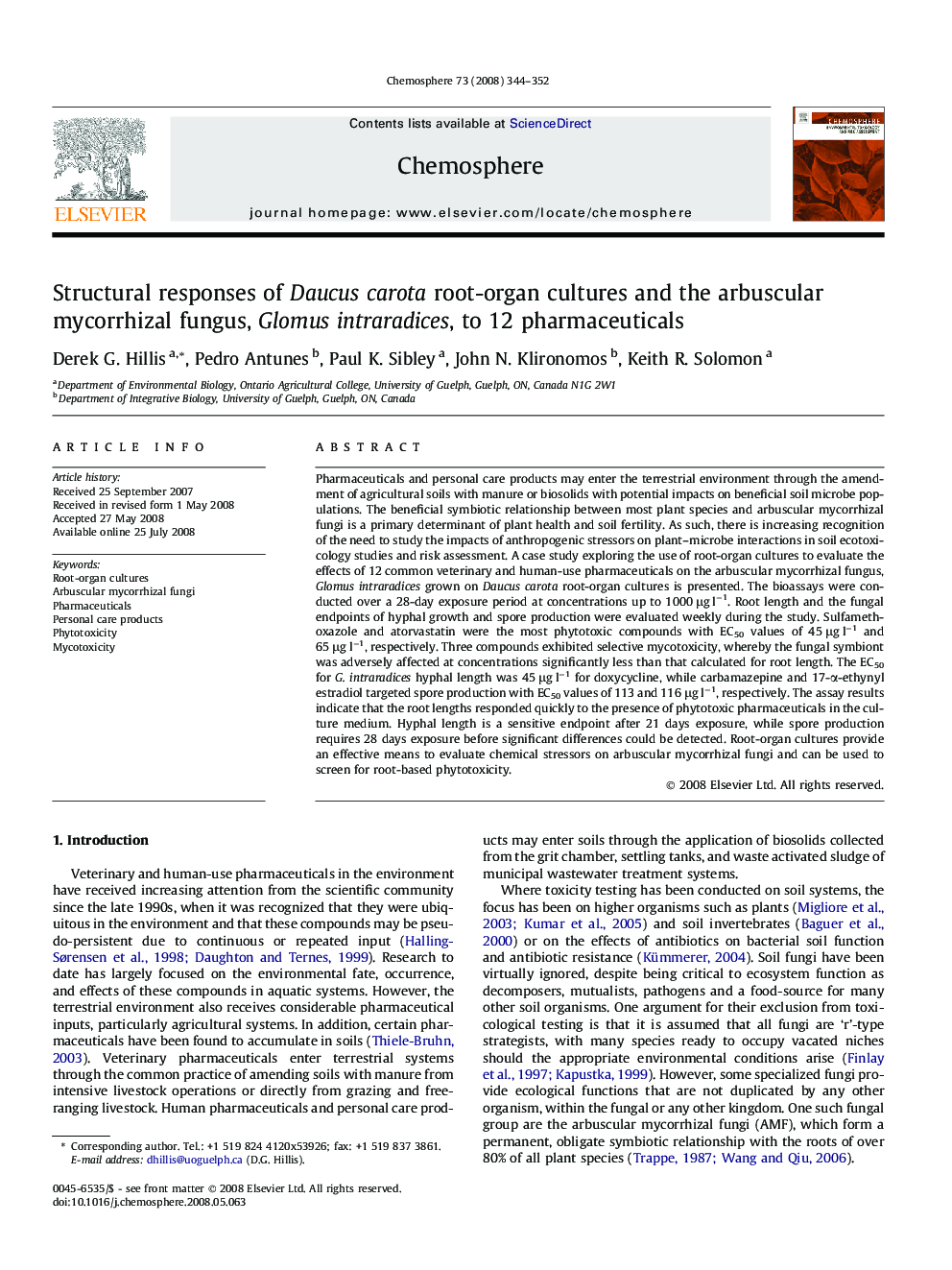| کد مقاله | کد نشریه | سال انتشار | مقاله انگلیسی | نسخه تمام متن |
|---|---|---|---|---|
| 4413459 | 1307678 | 2008 | 9 صفحه PDF | دانلود رایگان |

Pharmaceuticals and personal care products may enter the terrestrial environment through the amendment of agricultural soils with manure or biosolids with potential impacts on beneficial soil microbe populations. The beneficial symbiotic relationship between most plant species and arbuscular mycorrhizal fungi is a primary determinant of plant health and soil fertility. As such, there is increasing recognition of the need to study the impacts of anthropogenic stressors on plant–microbe interactions in soil ecotoxicology studies and risk assessment. A case study exploring the use of root-organ cultures to evaluate the effects of 12 common veterinary and human-use pharmaceuticals on the arbuscular mycorrhizal fungus, Glomus intraradices grown on Daucus carota root-organ cultures is presented. The bioassays were conducted over a 28-day exposure period at concentrations up to 1000 μg l−1. Root length and the fungal endpoints of hyphal growth and spore production were evaluated weekly during the study. Sulfamethoxazole and atorvastatin were the most phytotoxic compounds with EC50 values of 45 μg l−1 and 65 μg l−1, respectively. Three compounds exhibited selective mycotoxicity, whereby the fungal symbiont was adversely affected at concentrations significantly less than that calculated for root length. The EC50 for G. intraradices hyphal length was 45 μg l−1 for doxycycline, while carbamazepine and 17-α-ethynyl estradiol targeted spore production with EC50 values of 113 and 116 μg l−1, respectively. The assay results indicate that the root lengths responded quickly to the presence of phytotoxic pharmaceuticals in the culture medium. Hyphal length is a sensitive endpoint after 21 days exposure, while spore production requires 28 days exposure before significant differences could be detected. Root-organ cultures provide an effective means to evaluate chemical stressors on arbuscular mycorrhizal fungi and can be used to screen for root-based phytotoxicity.
Journal: Chemosphere - Volume 73, Issue 3, September 2008, Pages 344–352